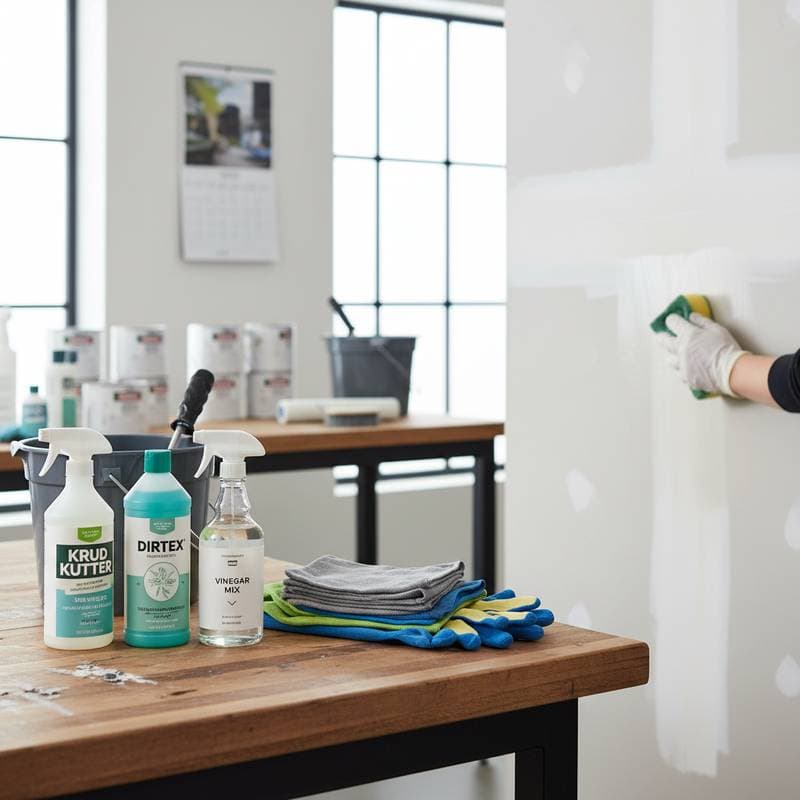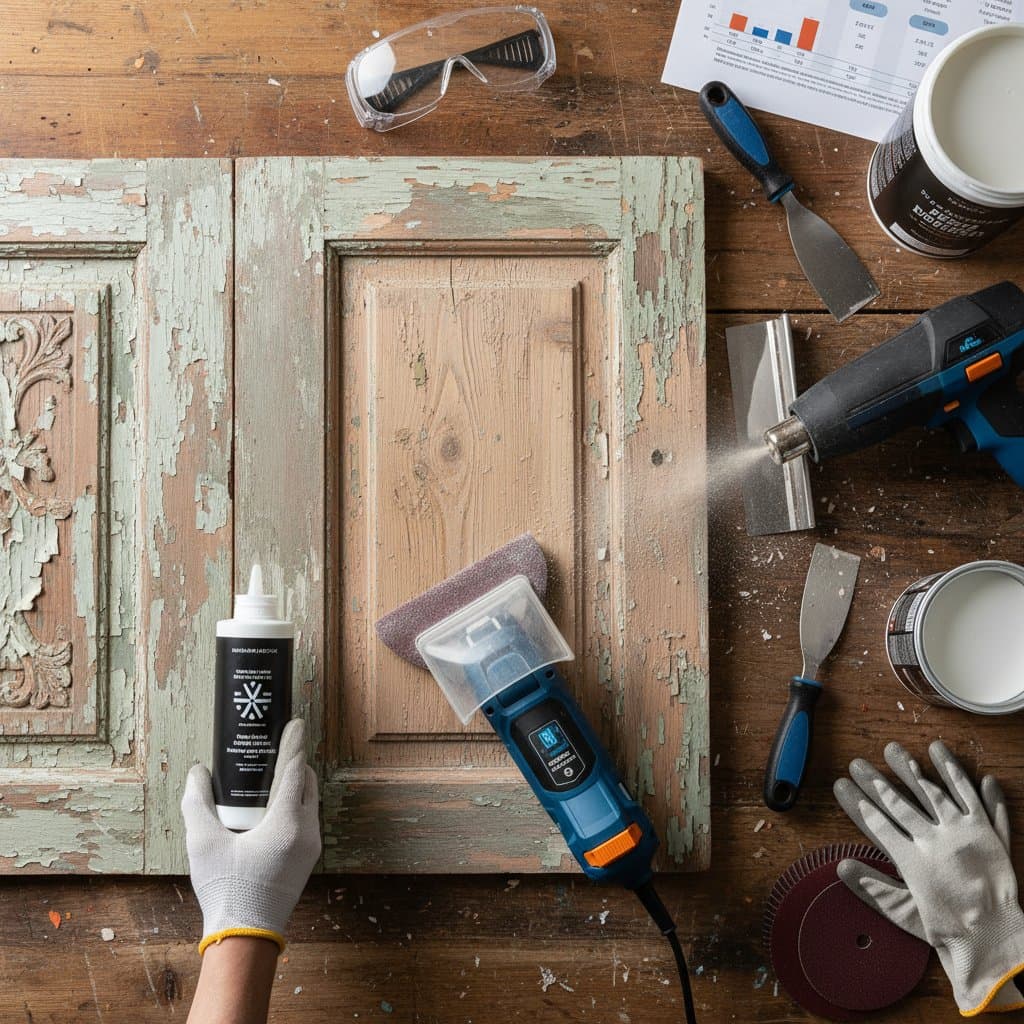Adapting to EPA's TSP Restrictions in Paint Preparation
Homeowners and professional painters have depended on trisodium phosphate, known as TSP, for decades to prepare surfaces before applying paint. This cleaner effectively removes grease, grime, and mildew, creating an ideal base for primer and topcoats. However, recent Environmental Protection Agency regulations now limit phosphate-based cleaners, requiring professionals and DIY enthusiasts to adopt environmentally compliant options. Grasping these shifts and selecting appropriate alternatives proves vital for successful painting projects.
Reasons Behind the EPA's TSP Limitations
TSP earns its popularity through low cost and robust performance in dissolving tough residues. The concern arises from its environmental impact: phosphates drain into waterways, promoting excessive algae blooms that deplete oxygen levels and threaten aquatic ecosystems. In response, the EPA mandates that surface preparation cleaners adhere to stringent standards to preserve water quality. Although TSP remains permissible in certain controlled scenarios, restrictions tighten for residential and commercial applications where runoff risks entering storm drains.
Implications for Homeowners
These regulations do not diminish the importance of meticulous surface cleaning prior to painting. Contaminants such as dirt, oils, and mildew hinder paint adhesion, resulting in premature peeling and reduced longevity. Homeowners now seek TSP replacements that align with EPA guidelines yet deliver comparable cleaning efficacy.
A range of substitutes exists, incorporating biodegradable surfactants, mineral-derived components, or gentle alkaline formulas that eliminate residues without polluting water sources. Selecting the optimal substitute involves matching the product to specific surface types and contamination levels for best outcomes.
Detailed Project Cost Analysis
Typical Cost Ranges
- Basic cleaning tasks: $50 to $120
- Routine surface preparation: $150 to $350
- Full eco-friendly paint prep: $400 to $700
Standard Inclusions
- Application of phosphate-free cleaners to walls, trim, and exteriors
- Thorough rinsing and drying to promote adhesion
- Light scraping and sanding for smooth, paint-ready surfaces
- Proper disposal of materials per environmental protocols
Additional Expenses
- Mold or mildew treatment with targeted biocides: $75 to $200
- Broad exterior cleaning or high square footage: $0.30 to $0.60 per square foot
- Specialized solutions for smoke, heavy grease, or nicotine residue: $25 to $100 extra per room
Influences on Total Expenses
| Factor | Impact Level | Specific Examples |
|---|---|---|
| Surface material | Moderate | Porous options like brick or stucco demand greater volumes of cleaner |
| Degree of soiling | High | Intense grease in kitchens or mildew in bathrooms |
| Cleaner selection | Moderate | Biodegradable formulas exceed phosphate options in price |
| Labor charges | Variable | Variations by region and expertise level |
| Project scale | High | Entire home versus isolated room |
Exploring Effective TSP Substitutes
Phosphate-Free Degreasers
These formulations replicate TSP's potency through eco-friendly surfactants that break down naturally. Look for labels indicating 'TSP substitute' or 'phosphate-free degreaser' to target products that dissolve oils and soils without hazardous byproducts. Such cleaners suit painted interiors, wooden trim, and various exterior sidings.
Citrus-Derived Cleaners
Extracted from citrus oils like orange or lemon, these options excel at cutting grease and neutralizing odors, making them ideal for kitchens and garages. Natural solvents penetrate stubborn buildup efficiently, often minimizing scrubbing efforts. Although initial costs run higher per gallon, their efficiency offsets expenses over time.
Mineral-Based Blends with Sodium Carbonate and Borates
These cleaners leverage alkaline minerals to lift grime gently, offering sufficient power for moderately soiled areas. Less harsh than TSP, they prove suitable for interior repaints on lightly contaminated surfaces. Professionals frequently recommend them for balanced cleaning without over-aggression.
Homemade Vinegar and Baking Soda Mixtures
For modest DIY efforts, combining white vinegar with baking soda provides a non-toxic option for minor wall cleaning. This duo tackles light dirt effectively in confined areas, though it falls short of commercial strength for heavy-duty tasks. Always test on inconspicuous spots to avoid surface damage.
Realistic Timeline for Preparation
Expect surface cleaning to span one to three days, influenced by project size and soil intensity. A single room often requires only a few hours to clean and dry, whereas exteriors may necessitate several applications and extended drying. Professionals allocate time for complete moisture evaporation, as trapped water leads to paint defects like bubbling. Allow a minimum of 24 hours post-cleaning before priming to guarantee optimal conditions.
Deciding Between Professional and DIY Approaches
Most phosphate-free cleaning proves manageable for homeowners, yet certain scenarios warrant expert intervention. Professionals equip themselves with tools like pressure washers, HEPA vacuums, and reach extensions for safe high-access work. Opt for pros in cases involving lead paint, mold proliferation, or smoke damage to ensure safety and regulatory adherence.
DIY suits situations where:
- The space remains compact and accessible
- Surfaces show minimal wear with superficial dirt
- Essential supplies and protective gear are on hand
Professionals excel when:
- Structures feature multiple levels or intricate designs
- Evidence of mildew, grease accumulation, or moisture issues appears
- Cleaning integrates with full painting services under one agreement
Selecting a Reliable Contractor
Engage contractors versed in EPA compliance to secure both quality and adherence. Inquire about their cleaning products and verify phosphate-free status. Established firms provide Material Safety Data Sheets for transparency and demonstrate how selections fulfill environmental criteria.
Essential Evaluation Steps
- Verify licensing and insurance for comprehensive protection.
- Obtain detailed written estimates covering methods, supplies, and labor.
- Solicit references from comparable past assignments.
- Scrutinize agreements to affirm EPA-compliant product usage throughout.
- Clarify protocols for wastewater management and residue handling.
Step-by-Step Cleaning Protocol
Pre-Cleaning Measures
- Scrape away flaking paint and loose debris.
- Shield plants and adjacent areas with protective sheeting.
- Don gloves and goggles for safe handling of solutions.
Cleaning Execution
- Distribute cleaner via sponge, spray bottle, or gentle pressure device.
- Proceed upward on vertical planes to avert drips and streaks.
- Rinse copiously with fresh water until no residue lingers.
Post-Cleaning Actions
- Permit full drying prior to any priming or painting.
- Examine surfaces for overlooked areas or films.
- Manage wastewater disposal in line with local ordinances.
Preventing Typical Pitfalls
Neglecting cleaning altogether invites adhesion failures and early deterioration. Inadequate rinsing leaves residues that sabotage paint bonds. Adhere strictly to manufacturer directions, rinsing until water flows clear. Exercise restraint with pressure washing to avoid etching wood or embedding moisture in substrates. Consult a professional for assessments if uncertainties arise regarding surface suitability.
Securing Lasting Results with Compliant Prep
Navigating EPA restrictions involves informed choices rather than disruption. Phosphate-free alternatives abound, often matching or surpassing TSP in performance for clean, receptive surfaces. Incorporate cleaning durations and budgets for supplies, workforce, and challenges like stains into your planning. This methodical approach yields protected homes, healthier surroundings, and enduring finishes.
Frequently Asked Questions
What renders TSP substitutes environmentally superior?
These alternatives omit phosphates that fuel waterway algae proliferation. Biodegradable components decompose harmlessly, curbing pollution while preserving cleaning prowess.
Which errors do homeowners commonly commit when adopting TSP substitutes?
Frequent oversights encompass omitting rinses, applying insufficient quantities, or rushing drying phases. Many also misjudge prep durations. Heed instructions and maintain a structured routine to sidestep complications.



